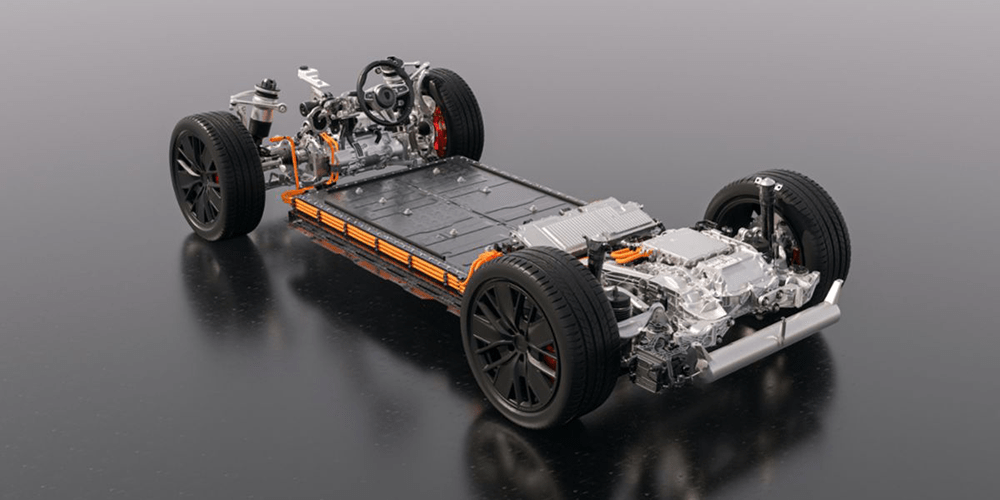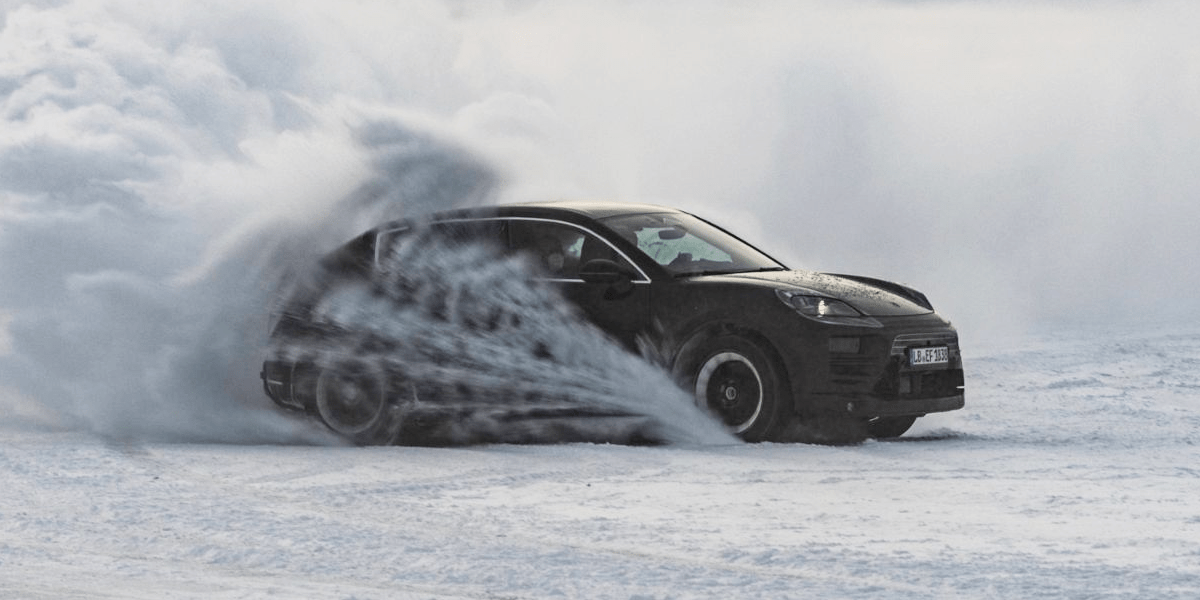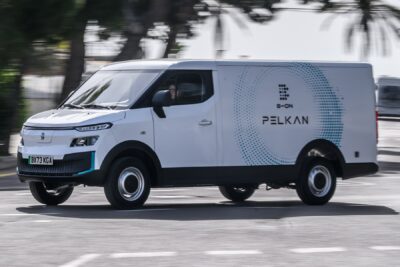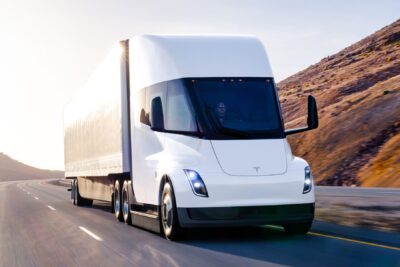Porsche presents technical details around the Macan’s battery
Porsche has now officially published many technical details about the upcoming all-electric Macan that go beyond what was announced to journalists in November 2022 – such as the battery of the upcoming electric SUV.
For example, the battery in the future all-electric compact SUV with a total capacity of around 100 kWh will consist of twelve modules with prismatic cells, as Porsche itself now writes in an article on the Macan and the PPE electric platform behind it. The mixing ratio of nickel, cobalt and manganese of the cells is 8:1:1.
At a preliminary event with journalists in November 2022, it had already leaked that the battery was to have an energy content of 100 kWh – at that time, however, it was still unclear whether this was a gross or net value. The phrasing “total capacity” therefore seems to refer to the gross energy content. How much of this can be used net is still not known. In the Taycan, 83.7 kWh are usable in the gross 93.4 kWh “Performance Plus” battery – which is now quite a large buffer. In the electric Macan with advanced technology, the difference between gross and net could become smaller.
However, Porsche also makes it clear that it is still not fixated on the maximum range of the vehicles, but rather has the travel time in mind – it would rather sacrifice some range if the performance of the vehicle increases due to a smaller and lighter battery. With the focus on travel time, “high-performance battery and charging technology” is the key. Specifically, the Macan’s 800-volt system is said to be able to charge from five to 80 per cent in less than 25 minutes. “Thanks to 800-volt technology, Porsche’s first PPE model series should be able to be charged with an even higher charging power than the 270 kW of the Taycan,” the Zuffenhausen-based company said. So far, there has only been talk of “charging power at the level of the Taycan”.
There is an innovation in the packaging of the electronic components: Porsche has applied for a patent for the so-called Integrated Power Box, which reduces costs as well as the necessary cabling and weight. It combines three space-saving components – the onboard AC charger, the high-voltage heater and the DC/DC converter.

Other points that Porsche publishes itself in the current article are known from the reports in November – and are thus confirmed by the company. For example, the Macan will be equipped with a function called “bank charging” for charging stations with only 400 volts: In the battery, the contactors are then switched so that instead of one 800-volt system, there are two “banks” of 400 volts each – and the two 400-volt batteries can then be charged faster internally in parallel. If necessary, both battery halves are first equalised in their state of charge and then charged together, according to Porsche.
The new generation of electric motors was also announced in November: Although permanent magnet synchronous electric machines (PSM) with hairpin windings remain, the magnets in the rotor have been rearranged to increase power density and efficiency – Porsche refers to this as a ‘double-V sheet cut’. In addition, the vehicles’ power electronics have been changed from silicon semiconductors to silicon carbide.
The PPE itself allows various drive configurations with rear-wheel and all-wheel drive in different power levels. According to the Porsche release, the system power should “initially” be up to around 450 kW, the maximum torque over 1,000 Nm. The equivalent of 612 hp is likely to be an all-wheel-drive model, which could possibly be offered as a Macan Turbo or Macan Turbo S in reference to the Taycan model designations. Porsche has not yet announced what performance level a base model with rear-wheel drive will achieve.
However, the driving performance of the electric Macan is not only to be defined by the drive power. As already suspected, Porsche will use a so-called “performance rear end” for some model variants. The electric motor is positioned particularly far back. This should not only ensure a slightly rear-focused weight distribution, but in combination with the dynamic torque distribution of the all-wheel drive as well as the rear-axle steering, improve agility when accelerating out of a curve. The aforementioned rear-axle steering is also intended to “resolve an old conflict of objectives” and combines agility in city traffic with stability and driving precision on the motorway.
The only thing is: Porsche does not mention when exactly the electric Macan is to be launched on the market in the current announcement. In July 2022, the sports car manufacturer confirmed that the model would not be launched until 2024 – due to delays in the software.
With reporting by Sebastian Schaal, Germany.





